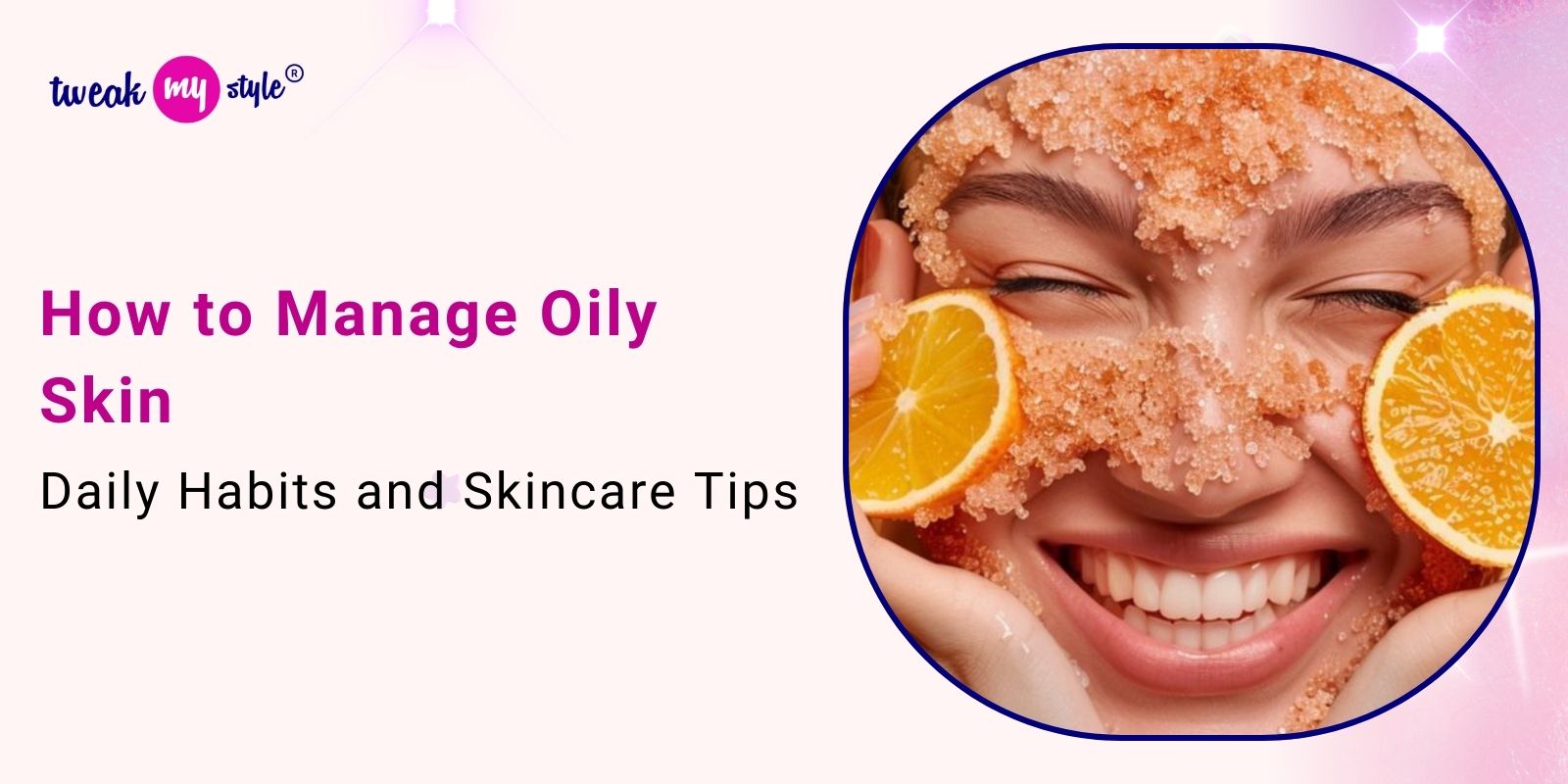Oily skin. It's a common concern, often associated with shine, enlarged pores, and a tendency to break out. While it can feel frustrating, understanding the root causes and implementing a consistent skincare routine can dramatically improve its appearance and feel. This isn’t about completely eliminating oil – your skin needs oil – but about managing its production to achieve a balanced, healthy complexion. Let's dive into the key daily habits and skincare tips for effectively managing oily skin.
Understanding Oily Skin
Before we jump into solutions, it's crucial to understand why you have oily skin. Oily skin isn’t just a genetic predisposition; it's a complex issue influenced by several factors:
- Sebum Production: The sebaceous glands in your skin produce sebum, an oily substance that lubricates and protects your skin. People with oily skin simply produce more sebum than others.
- Hormones: Hormonal fluctuations, particularly during puberty, menstruation, and pregnancy, can significantly increase sebum production.
- Genetics: Your genes play a role in determining your skin’s natural oil production.
- Diet: While not a direct cause, a diet high in processed foods, sugar, and unhealthy fats can contribute to inflammation, potentially exacerbating oily skin.
- Stress: Stress can trigger hormonal imbalances, which, in turn, can boost sebum production.
Daily Habits for Oily Skin Management
Skincare is only part of the equation. These daily habits will reinforce your efforts:
Hydration is Key: Counterintuitive as it may seem for oily skin, hydration is essential. Dehydrated skin can actually trigger the sebaceous glands to overcompensate, leading to more oil production. Drink plenty of water throughout the day.
Gentle Cleansing: Harsh cleansers strip the skin of its natural oils, creating a vicious cycle. Opt for a gentle, foaming cleanser formulated for oily or combination skin. Avoid sulfates, which can be overly drying. Cleanse twice daily – morning and evening.
Blotting Sheets (Strategically): Blotting sheets are your secret weapon for controlling shine throughout the day. Carry one with you and gently blot away excess oil without scrubbing. Don’t rub, as this can irritate the skin and spread oil around.
Regular Exercise: Exercise increases circulation and helps flush out toxins, which can contribute to overall skin health.
Manage Stress: Incorporate stress-reducing activities into your routine – yoga, meditation, deep breathing, or spending time in nature.
Proper Pillowcase Hygiene: Change your pillowcase frequently – ideally every 2-3 days – to prevent oil and bacteria buildup. Silk or satin pillowcases are gentler on the skin than cotton.
Skincare Routine for Oily Skin
Now let’s outline a targeted skincare routine:
Step 1: Double Cleanse (Evening)
- First Cleanse (Oil-Based): Start with an oil-based cleanser or cleansing balm to gently remove makeup, sunscreen, and surface grime. These are often more effective at dissolving oil than water-based cleansers.
- Second Cleanse (Water-Based): Follow with your gentle foaming cleanser as described above.
Step 2: Treatment (Focus on Specific Concerns)
This step depends on your specific skin concerns – acne, enlarged pores, hyperpigmentation, etc. Here are some common treatments:
- Salicylic Acid: A beta-hydroxy acid (BHA) that penetrates pores to dissolve oil and dead skin cells. Start with a low concentration (0.5% - 2%) and gradually increase as tolerated.
- Glycolic Acid: An alpha-hydroxy acid (AHA) that exfoliates the skin’s surface, promoting cell turnover and reducing the appearance of pores. Again, start low and increase gradually.
- Niacinamide: A powerful ingredient that helps regulate oil production, reduce redness and inflammation, and improve skin barrier function. It’s generally well-tolerated and suitable for most skin types.
- Retinoids (Start Slowly!): Retinoids (like retinol or prescription-strength tretinoin) are incredibly effective at treating acne and promoting cell turnover. However, they can be irritating, so start with a pea-sized amount applied only to the cheeks twice a week, gradually increasing frequency as tolerated. Always wear sunscreen when using retinoids.
Step 3: Moisturize (Yes, Even Oily Skin!)
It seems counterintuitive, but moisturizing is crucial for oily skin. Lightweight, oil-free, non-comedogenic moisturizers hydrate the skin without clogging pores. Look for ingredients like hyaluronic acid or glycerin.
Step 4: Targeted Treatments (Evening)
- Spot Treatment: If you’re dealing with active breakouts, use a spot treatment containing benzoyl peroxide or salicylic acid.
Product Recommendations (General Categories - Patch Test Always!)
- Cleansers: CeraVe Foaming Facial Cleanser, La Roche-Posay Effaclar Gel Cleanser, Paula's Choice CLEAR Pore Normalizing Cleanser
- Moisturizers: Neutrogena Hydro Boost Water Gel, Paula's Choice RESIST Anti-Aging Control Gel, CeraVe PM Facial Moisturizing Lotion
- Serums: The Ordinary Niacinamide 10% + Zinc 1% , Paula’s Choice 10% Niacinamide Booster, The Ordinary Hyaluronic Acid 2% + B5
- Spot Treatments: Differin Adapalene Gel 0.1% (Retinoid), Benzoyl Peroxide Spot Treatment
Important Considerations & Long-Term Management
- Patch Testing: Before incorporating any new product into your routine, always perform a patch test on a small area of skin (e.g., behind your ear) to check for irritation.
- Don't Over-Exfoliate: Excessive exfoliation can damage your skin's barrier, leading to increased oil production and irritation.
- Listen to Your Skin: Pay attention to how your skin is reacting to your routine. If you experience redness, irritation, or dryness, scale back on the frequency or strength of your treatments.
- Consistency is Key: It takes time to see results. Stick with your routine for at least 6-8 weeks before evaluating its effectiveness.
- Diet and Lifestyle: Maintain a healthy diet and manage your stress levels for overall skin health.















Share this post on: